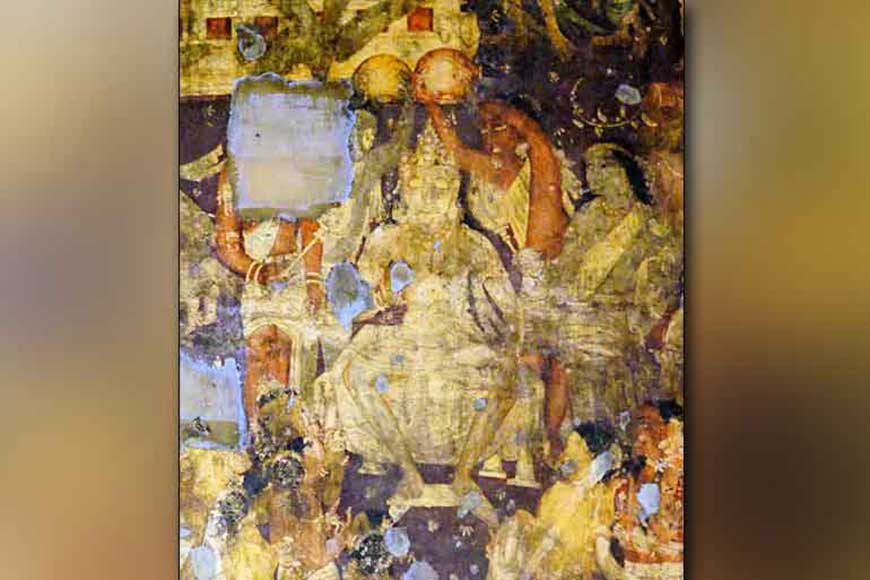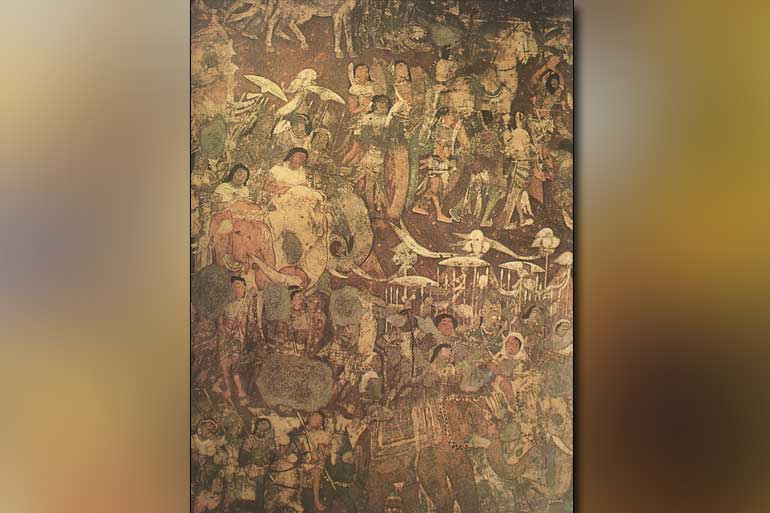Bijoy Singha, the prince of Bengal who was once the ruler of Sri Lanka

Poet Michael Madhusudan Dutt had planned to write an epic poem narrating the heroic victory of Singhal (Sri Lanka) by Bijoy Singha. He had researched on the subject extensively and jotted down notes in English, but his untimely death put an end to his magnum opus.
Most Bengalis are introduced to the heroic exploits of Bijoy Singha in childhood from the poems of Dwijendralal Roy and Satyendranath Dutta. Bijoy Singha is considered the first historical ruler of Singhal Dweep (Island). According to researchers, Bijoy Singha ruled Singala from 543 BC to 505 BC. However, no concrete details of his background, his birthplace, how he reached the island and his phenomenal rise to power etc can be traced and all we get to know are fantastic folklores that sing paean of his heroic deeds and his mythical rise to power. Stories of Bijoy Singha’s miraculous feats are written in the ancient Buddhist literary collections, Maha-Vansha and Dweep-Vansha. Hiuen Tsang (also spelt Xuanzang), the Chinese Buddhist monk, scholar, traveler, and translator who traveled to India in the 7th century during the early Tang dynasty has mentioned ruler Bijoy Singha’s name in his works. Singhal’s monarch, Bijoy Singha’s exploits have been delineated in the frescos of Ajanta as well.
Historians do not brush off everything that is written about the great ruler in the mythical stories. In fact, some of the incidents described bear close resemblance to historical facts. Maha-Vansha and Dweep-Vansha, the two books relate a similar tale about the origin and reign of Bijoy Singha. Sushima was a brave and independent princess of Bengal. She was often ridiculed for her confidence and individuality. Saddened by such unfair criticism, Sushima quietly left the kingdom one day and went in search of a new abode. During her journey, she met a group of merchants who were heading to Magadh. She joined the group. The group was attacked by a hungry lion at Rarh Desh (roughly south and south-west part of present-day Bengal). The group disintegrated and all the merchants ran helter-skelter for shelter to save their lives. The lion carried Sushima to his den and they consummated their marriage. In time, Sushima gave birth to two children. Their son was named Singhabahu and the daughter was named Singhasibli. Dineshchandra Sen infers the ‘Lion’ that attacked the traders’ group was not literally a lion but a very ruthless and terrifying dacoit titled ‘Singha’ who had attacked the merchants.

One day Sushima ran away from the lion’s den with her children and headed for her father’s kingdom. Her father, Bangeshwar had died by then and the kingdom was being ruled by Bangeshwar’s nephew. Sushima married him and became the queen. Meanwhile, her former husband, Singha reached the periphery of Bangladesh looking for her. He unleashed a reign of terror in the area so his son Singhabahu was sent to contain him. Singhabahu killed him in a war. Singhabahu stayed back at Rarh Desh and became the new ruler there. Singhapur became his capital. He married his sister Singhasibli and she became the queen of Rarh Desh. Singhasibli had 32 sons and the eldest of them was Bijoy Singha. Bijoy was a spoilt brat who had a band of followers and they moved around destroying property, torturing and killing common people. The subjects sought the help of their ruler, Singhabahu but the king failed miserably to leash his unruly son. A disgusted and frustrated Singhabahu finally tonsured the heads of Bijoy Singha and his friends and drove them out of the kingdom.
The exiled prince took three ships and ventured into the sea from Tamralipta Port. Bijoy Singha and his 700 followers boarded the first ship, the second carried their wives and paramours and the third ship carried their children. Initially, the ships sailed smoothly but a sudden and severe sea storm sent everyone in a tizzy. The three ships lost track and each went in separate directions. The ship carrying children reached Naggagdweep or Naag Dweep, the one carrying the ladies anchored at Mahendradweep or Mahila Dweep and the one carring Bijoy Singha and his comrades reached Supparak or Suparadweep. The inhabitants of Supparak were very good hosts and took utmost care of Bijoy Singha and his men. But as the saying goes – old habits die hard, Bijoy Singha and his goons unleashed a reign of terror on his hosts as soon as they all recovered. But they were outsmarted by the islanders and finally they had to concede defeat and leave the island.
They set sail again. This time the ship moved southwards. After sailing for days without any fixed destination, they realized their stock of food and water was nearing end and there was no sign of land in the vicinity. They continued for days and then suddenly land was spotted. This was Ravana’s land, Lankadweep or Tamraparni. This land was at that time under the reign of Yaksharaj, Mahakalsena. According to Buddhist literature, the day Bijoy Singha’s ship anchored at Tamraparni, on that very day Gautam Buddha breathed his last at Kushinagar in north India. Meanwhile, King Mahakalsena was not at all welcoming and did not approve of Bijoy Singha setting foot on his kingdom. However, his daughter, Kubeni, fell head over heels in love with Bijoy and she helped him kill her father and become the king of Tamraparni. Bijoy married her and made her his queen. They had two children. Bijoy changed the name of the kingdom from Tamraparni and renamed it Singhal, in his family dynasty’s name.
Meanwhile, Kubeni’s happiness was short-lived. Bijoy was not content with Kubeni and wanted to marry a true blue-blood princess and proclaim her his queen. He got the opportunity soon and seized it to marry the daughter of the Pandya ruler of Madurai and drove away Kubeni. Kubeni went back to her Yaksha family with her children but they did not forgive her betrayal and killed her.
Bijoy Singha ruled Singhal for 38 years until his death but he died without any successor. Soon anarchy reigned in the kingdom. Before his death, Bijoy wrote a letter to his twin sibling, Sumitto in Singhapur, requesting him to take over the reins of ruling the island kingdom from him. But by then, Sumitto was already the ruler of Singhapur and advanced in years. So, he sent his youngest son, Panduvasudev to Singhal. Panduvasudev reached Singhal and became the next king. Their dynasty ruled the island kingdom for the next 600 years.










